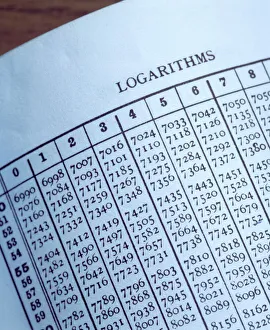Logarithm Collection
Logarithm, a mathematical concept that revolutionized calculations and paved the way for scientific advancements
All Professionally Made to Order for Quick Shipping
Logarithm, a mathematical concept that revolutionized calculations and paved the way for scientific advancements. Its origins can be traced back to the logarithm table, a tool developed by Scottish mathematician John Napier in the 17th century. Napier's groundbreaking work on logarithms was documented in his book "Mirifici Logarithmorum, " which showcased his remarkable invention. The title pages of this first edition are adorned with intricate illustrations, capturing the essence of Napier's genius. The logarithm table provided a systematic approach to perform complex calculations involving multiplication and division by simplifying them into addition and subtraction operations. This breakthrough not only saved time but also enhanced accuracy in various fields such as astronomy, physics, and engineering. Spanish architect Benito Bails recognized the significance of logarithms and incorporated them into his influential work "Elementos de Matematica. " His inclusion of logarithmic principles demonstrated their practical applications beyond mathematics alone. The impact of logarithms is evident through historical artifacts like geometrical constructions from Napier's era. These diagrams showcase how logarithmic concepts were utilized to solve geometric problems efficiently. John Napier's contributions extended far beyond mathematics; he was also an accomplished physicist, astronomer, and astrologer. His dedication to advancing knowledge led him to develop this transformative mathematical tool that continues to shape our world today. In summary, the advent of logarithms marked a turning point in scientific progress. From Napier's initial discovery to its integration into architectural designs and other disciplines, it has proven indispensable throughout history. Logarithms remain an essential component of modern-day calculations while serving as a testament to human ingenuity and innovation.












